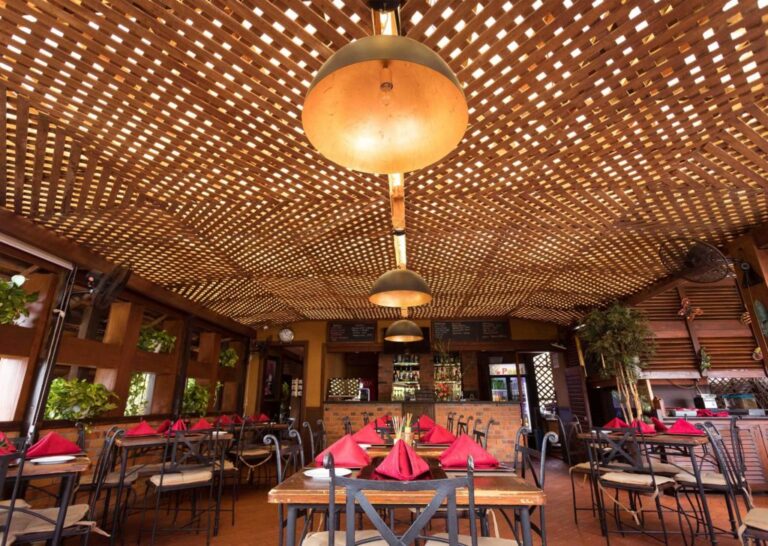Getting Around Paris: A Travel Guide
Often called the “City of Light,” Paris is a place where history, art, fashion, and culinary delights seamlessly blend, providing travelers with an unparalleled experience. Paris has something for everyone, from iconic landmarks to charming neighborhoods. We’ll cover the best things to see and do in Paris, how to stay safe, where to stay, typical costs, suggested budgets, money-saving tips, how to get around, when to travel, and where to book.
Key Takeaways
- Plan Ahead: Paris offers an abundance of attractions; prioritize what interests you the most.
- Cultural Experiences: Immerse yourself in local culture, whether through cuisine, art, or history.
- Stay Safe and Smart: Remain aware of your surroundings and enjoy all that Paris has to offer.
Table of Contents
- Top 5 Things to See and Do in Paris
- How to Stay Safe in Paris
- Where to Stay in Paris
- Typical Costs and Suggested Budget
- Money-Saving Tips
- How to Get Around Paris
- When to Go
- Best Places to Book Your Trip
Top 5 Things to See and Do in Paris
1. Eiffel Tower

The majestic Eiffel Tower illuminates the Paris skyline at night.
No trip to Paris is complete without a visit to the Eiffel Tower. Standing at 1,083 feet, this iconic structure is an architectural marvel. You can take an elevator or climb the stairs to the second floor for breathtaking views of the city.
- Tips: Visit early in the morning or late in the evening to avoid crowds.
- Entry Fee: Tickets range from €16.60 (stairs to the second floor) to €25.50 (lift to the summit).
- Rating: 4.7/5 (Google Reviews)
2. The Louvre Museum
The Louvre Museum, home to thousands of artworks, including the Mona Lisa.
As the world’s largest art museum, the Louvre is a treasure trove of history and culture. With over 35,000 works of art, including the Mona Lisa and the Venus de Milo, the Louvre is a must-visit for art lovers.
- Tips: Book tickets online to skip the long lines.
- Entry Fee: €17 (online), €15 (on-site).
- Rating: 4.6/5 (Google Reviews)
3. Notre-Dame Cathedral

The stunning facade of Notre-Dame Cathedral.
Though currently under restoration after the 2019 fire, Notre-Dame remains a symbol of Paris. The Gothic architecture and historical significance make it worth a visit.
- Tips: While restoration is ongoing, you can still admire the exterior and the surrounding Île de la Cité.
- Entry Fee: Free to enter the grounds; donations welcome.
- Rating: 4.8/5 (Google Reviews)
4. Montmartre and Sacré-Cœur Basilica

The breathtaking view of Sacré-Cœur Basilica atop Montmartre.
Montmartre is a historic district known for its bohemian vibe. The climb to Sacré-Cœur Basilica rewards you with panoramic views of the city. The basilica itself is a stunning piece of architecture.
- Tips: Explore the charming streets and artists’ square (Place du Tertre) nearby.
- Entry Fee: Free to enter the basilica; dome access is €6.
- Rating: 4.7/5 (Google Reviews)
5. Palace of Versailles
The opulent gardens of the Palace of Versailles.
A short train ride from Paris, the Palace of Versailles is a UNESCO World Heritage site. The palace, with its magnificent gardens and Hall of Mirrors, tells the story of French royalty.
- Tips: Visit on weekdays to avoid crowds, and consider a guided tour for a richer experience.
- Entry Fee: €20 for palace entry; gardens are free on non-fountain show days.
- Rating: 4.6/5 (Google Reviews)
How to Stay Safe in Paris
While Paris is generally safe for tourists, it’s always wise to take precautions:
- Stay Aware: Be vigilant in crowded places, particularly at popular tourist spots, as pickpockets can be prevalent.
- Emergency Contacts: Save local emergency numbers (e.g., 112 for emergencies).
- Travel Insurance: Consider purchasing travel insurance for added security.
- Personal Safety: Avoid poorly lit areas at night and trust your instincts.
Where to Stay in Paris
1. Le Marais
A historic district filled with boutiques, cafes, and art galleries. It’s perfect for those who want to experience the local culture.
Hotels to Consider:
- Hôtel Caron de Beaumarchais: A charming hotel with prices starting at €120 per night.
- Hotel de la Porte Dorée: Offers rooms from €80 per night.
2. Saint-Germain-des-Prés
Known for its vibrant literary and artistic history, this area boasts beautiful streets and exquisite dining options.
Hotels to Consider:
- Hôtel des Grands Hommes: Prices from €140 per night.
- Hôtel Louis 2: Stylish rooms starting at €130 per night.
3. Montmartre
Famous for its artistic history, Montmartre offers a unique Parisian experience with breathtaking views.
Hotels to Consider:
- Le Relais Montmartre: Cozy rooms from €100 per night.
- Hôtel des Arts Montmartre: Starting at €90 per night.
Typical Costs and Suggested Budget
Understanding the costs involved in traveling to Paris can help you plan your trip more effectively. Here’s a breakdown:
Accommodation
- Budget: €50-€100 (hostels, budget hotels)
- Mid-range: €100-€250 (3-star hotels, boutique hotels)
- Luxury: €250 and above (5-star hotels)
Food
- Budget: €5-€15 (cafés, street food)
- Mid-range: €15-€40 (bistros, casual dining)
- Luxury: €40 and above (fine dining)
Transportation
- Metro Ticket: €1.90
- Day Pass: €7.50
- Taxi (from the airport): €50-€70 (depending on your location)
Attractions
- Average entry fees: €10-€25 per attraction.
Suggested Daily Budget
- Budget Traveler: €70-€100
- Mid-range Traveler: €150-€250
- Luxury Traveler: €300 and above
Money-Saving Tips
- Book in Advance: For attractions and accommodations to secure the best rates.
- Paris Pass: Consider getting a Paris Pass, which provides entry to many attractions and public transport for a fixed price.
- Picnic in the Park: Buy fresh baguettes, cheese, and wine from local markets and enjoy a picnic in one of the city’s many parks.
- Free Attractions: Take advantage of free museums on the first Sunday of each month or explore charming neighborhoods like Le Marais and Montmartre at no cost.
How to Get Around Paris
Public Transport
- Metro: Efficient and the quickest way to travel around the city.
- Buses: Offer a scenic view of the city but can be slower.
- RER: Train service connecting central Paris to surrounding areas.
Biking
- Velib: A bike-sharing system ideal for exploring at your own pace.
Walking
Many attractions are within walking distance, and wandering through the streets can reveal hidden gems.
When to Go
Best Time to Visit
- Spring (March to June): Mild weather and blooming gardens.
- Fall (September to November): Fewer tourists and pleasant temperatures.
Avoiding Crowds
Visit during shoulder seasons (April-May, September-October) for a more relaxed experience.
Best Places to Book Your Trip
- Online Travel Agencies: Websites like Booking.com or Expedia for accommodations and flights.
- Direct Booking: Check hotel websites for exclusive deals.
- Tours and Experiences: Viator and GetYourGuide for guided tours and activities.
FAQs
1. What is the best way to get to Paris?
The best way is to fly into Charles de Gaulle Airport (CDG), which is well-connected to the city via trains and buses.
2. Is Paris expensive?
Paris can be pricey, but with a little planning, you can find budget-friendly options for accommodation, food, and attractions.
3. Do I need to speak French?
While many Parisians speak English, learning a few basic French phrases can enhance your experience.
4. What’s the best way to learn about the city’s history?
Consider joining a guided walking tour, which often provides in-depth insights into the city’s history.
5. Are there any cultural norms I should be aware of?
It’s polite to greet shopkeepers with “Bonjour” and say “Merci” when you leave.
With its rich history, stunning architecture, and vibrant culture, Paris is a city that captures the heart. Whether you’re wandering along the Seine, savoring a croissant, or marveling at world-class art, your journey in Paris will surely be unforgettable. Bon voyage!








